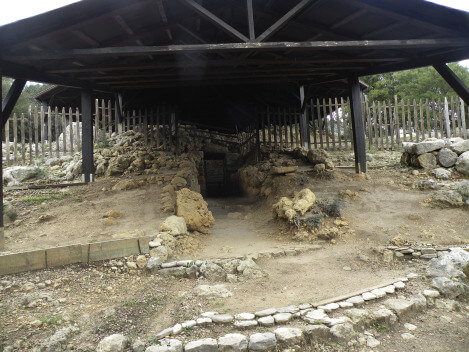
In archaeology, precision isn’t just a preference—it’s a necessity. Every detail, no matter how minute, can provide insights into ancient civilizations and their mysteries. As the quest for accuracy continues, the technology involving the inertial measurement unit, or IMU, emerges as a vital ally. This advanced tool doesn’t just pinpoint locations; it also offers tilt compensation, ensuring that measurements remain consistent even on uneven terrains. Join us as we explore the nuances of this technology and its significant contributions to the field of archaeology.
The Evolution of GNSS Technology in Archaeology
From rudimentary tools and hand-drawn maps to sophisticated satellite systems, the tools of archaeology have undergone a remarkable transformation. GNSS technology, in particular, has been a catalyst for this change, offering unparalleled accuracy in mapping and site analysis. As the discipline evolves, the integration of GNSS IMU systems has further refined data collection, allowing for precise readings even when the device is tilted. This blend of old-world exploration with new-age technology is setting new standards in archaeological research.
Understanding GNSS IMU Technology:
Global Navigation Satellite System (GNSS) is a term that encompasses a variety of satellite navigation systems, including GPS (U.S.), GLONASS (Russia), BeiDou (China), and Galileo (EU). These systems work by triangulating signals from multiple satellites to determine precise location coordinates on Earth. For many years, GNSS has been the backbone of numerous applications, from navigation to mapping, and its introduction to archaeology marked a significant leap in site mapping and artifact positioning.
However, while GNSS provides latitude, longitude, and altitude data, it has limitations when it comes to orientation, especially when the receiver is on a moving or tilted platform. This is where the Inertial Measurement Unit (IMU) comes into play. An IMU is a device that measures and reports specific force, angular rate, and sometimes magnetic field surrounding the sensor. It typically consists of a combination of accelerometers and gyroscopes, and sometimes magnetometers.
When GNSS and IMU are combined, the result is a system that can provide both position and orientation data. One of the standout features of integrating IMU with GNSS is tilt compensation. In practical terms, this means that even if the GNSS device is tilted (due to uneven terrain or other obstacles), it can still provide accurate positional data. This is particularly valuable in archaeology, where excavation sites might be in challenging terrains, and maintaining a perfectly level device isn’t always feasible.
Furthermore, the real-time data processing capabilities of GNSS IMU systems mean that archaeologists can get instant feedback on their measurements. This immediacy is crucial when making decisions on-site and ensures that the collected data aligns with the site’s actual dimensions and topography.
In summary, the fusion of GNSS and IMU technologies offers a robust solution for archaeological endeavors. By ensuring accurate position and orientation data in real-time, even in challenging conditions, this combined technology is paving the way for more detailed, accurate, and efficient archaeological research.
Choosing the Right GNSS IMU Receiver for Archaeological Work:
Selecting the right GNSS IMU receiver for archaeological endeavors is a decision that can significantly influence the quality and accuracy of the data collected. Given the delicate nature of archaeological sites and the importance of precise measurements, it’s essential to consider several factors when making this choice:
Accuracy: At the forefront of considerations is the device’s accuracy. Archaeological sites often contain artifacts and structures spaced closely together. A slight deviation can lead to incorrect interpretations. Ensure the receiver offers high precision, especially when combined with IMU for tilt compensation.
Durability: Archaeological sites can be in diverse environments, from dense forests to arid deserts. The receiver should be robust enough to withstand these conditions. Look for features like water and dust resistance, and a build that can endure accidental drops or impacts.
Battery Life: Extended battery life is crucial, especially for sites located in remote areas where charging facilities might be scarce. A long-lasting battery ensures uninterrupted work, maximizing the efficiency of field trips.
Connectivity Options: The ability to connect to various satellite systems (like GPS, GLONASS, BeiDou, and Galileo) enhances accuracy and reliability. Additionally, options for internet connectivity, such as LTE modems or Wi-Fi, can be beneficial for real-time data sharing and cloud storage.
Compatibility with Other Devices: Archaeological work often involves using a range of equipment, from ground-penetrating radars to digital cameras. The GNSS IMU receiver should seamlessly integrate with these devices, allowing for smooth data transfer and synchronization.
it’s evident that the appropriate GNSS IMU receiver stands as a transformative instrument in the realm of archaeological exploration. At the heart of successful fieldwork lies the delicate balance of precision and practicality. By emphasizing attributes such as pinpoint accuracy, robust build quality, extended battery longevity, seamless connectivity, and broad compatibility with various software and tools, archaeologists and researchers are positioning themselves at the forefront of technological advancement.
With such a device in hand, the daunting task of data collection becomes not only more manageable but also significantly more insightful. The ripple effects of this enhanced capability are profound: it allows for a richer understanding of historical sites, more detailed mapping of ancient terrains, and a broader perspective on past civilizations. In essence, by investing in the right GNSS IMU receiver, professionals are not just adopting a tool but embracing a catalyst that elevates the caliber and scope of their archaeological endeavors.
Daniel Reynolds
Related posts
Stay connected
- How LoveOn Chat Is Becoming the Most Versatile AI Companion for Digital UsersThe internet keeps shifting toward hyper-personal interaction, and AI companions are at the center of this shift. What used to be simple chatbots are now evolving into emotionally aware, adaptive, and multi-functional digital partners. Among the new generation of platforms, LoveOn Chat is becoming one... The post How LoveOn Chat Is Becoming the Most Versatile […]
